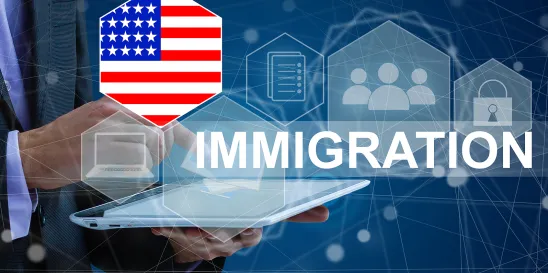If the first few weeks of the year are an indication, it will be hard to miss immigration in the headlines in 2024. Already, it has emerged as a key issue in congressional spending fights and the 2024 presidential campaign, which is beginning to kick into a higher gear. Border policy and campaign rhetoric may drive the news cycle, but federal agencies will continue to work out of the spotlight on regulations that will have a huge impact on business immigration programs. On top of that, the U.S. Supreme Court will decide three cases that could upend current immigration litigation procedures. Here are five questions we are watching:
-
Will USCIS overhaul the H-1B lottery in time for the FY2025 cap season?
Big changes are in store for the H-1B program this year after the Department of Homeland Security published a 227-page H-1B “modernization” proposal in October 2023. One immediate question is whether changes to the H-1B lottery will be in place for this year’s cap season. Under U.S. Citizenship and Immigration Services’ proposal, the agency would shift to a one-beneficiary, one-selection system rather than the current employer-focused process. This proposed change is designed to eliminate incentives for bad actors to submit multiple H-1B registrations for the same individual — and has the potential to reduce the overall number of registrations and boost H-1B selection rates for employers. Business and immigration coalitions have called on USCIS to make immediate changes to the lottery. The agency has indicated that it may finalize the lottery provisions before the rest of the proposed rule and has submitted a final rule for White House review. With H-1B registration expected to open in March, however, the timeline is tight.
-
Will the State Department expand its domestic visa renewal pilot?
The State Department took a big step last month in announcing the launch of a domestic visa renewal pilot program, scheduled to begin Jan. 29. Domestic visa renewal has not been widely available since 2004, and advocates for its revival see it not only as a way to make visa renewal easier for certain individuals but also as a means to reduce the workload at embassies and consulates abroad. The pilot is limited in scope, open to approximately 20,000 H-1B holders whose prior visas were approved during certain time frames at U.S. visa processing posts in Canada and India. No one knows for sure what comes next, but the State Department has indicated that once the pilot concludes on May 1, it will evaluate its success before potentially resuming domestic visa renewals more broadly.
-
How dramatically will filing fees increase?
USCIS is poised to finalize increases to immigration filing fees in 2024 — the big question is by how much. In January 2023, the agency proposed a new fee schedule that would see fees increase by a weighted average of 40% — and more for most high-skilled classifications. Among the biggest increases would be a jump from $10 to $215 in the H-1B registration fee. Business and trade organizations responded to the proposal by saying that while USCIS must adjust fees to cover its costs, the agency should take steps to improve services and reduce fee increases where possible. According to its regulatory agenda, USCIS is targeting April 2024 to publish a final regulation. USCIS submitted the rule for White House review in early January, suggesting the agency may be accelerating its timeline. There will likely be a delayed effective date and litigation could further slow implementation, but employers should have an idea of how dramatic the fee increases will be within a matter of months.
-
Will the Biden administration’s AI executive order help ease the green card process?
In October, President Biden issued an executive order on artificial intelligence that included a call for streamlined immigration processes to help keep the U.S. competitive in AI and related fields. Among other measures, Biden called on the Department of Labor to consider updates to the “Schedule A” shortage occupation list. Employers seeking to sponsor foreign nationals for Schedule A jobs do not require permanent labor certification (PERM) to begin the green card process. The DOL is currently seeking public input on STEM and non-STEM jobs that should be added to the list and recommendations about how to establish a methodology for future updates. Employers will be watching this development carefully: Schedule A has not been updated since 2004, and the ability to bypass PERM for these shortage occupations can save months or even up to a year in the green card process.
-
How will federal court rulings affect immigration?
In the immigration community, all eyes will be on the Fifth Circuit Court of Appeals this year, as it is expected to rule on the legality of the Biden administration’s regulation designed to “preserve and fortify” Deferred Action for Childhood Arrivals, or DACA. The ruling will almost surely be appealed to the U.S. Supreme Court, though the Court likely won’t hear the case during its current term.
The Supreme Court is poised to decide a trio of cases that do not facially involve immigration but could upend immigration-related policy and procedures. The justices heard arguments in November in Securities and Exchange Commission v. Jarkesy, a case questioning the scope and authority of administrative law judges to decide disputes over federal matters, including immigration violations. They heard two other cases on Jan. 17 — Relentless, Inc. v. Department of Commerce and Loper Bright Enterprises v. Raimondo — that challenge the decades-old Chevron doctrine, which requires courts to defer to federal agencies’ interpretations of statutes that are not clear or are silent on the question at issue. Taken together, the cases could have a revolutionary impact on immigration litigation, including the power that immigration judges have over noncitizens and the standard of review used by federal judges in reviewing immigration decisions.
What does all this mean for employers? The business community has shown support for reforming the H-1B lottery, piloting domestic visa renewal and updating the Schedule A list of occupations, all of which, in one way or another, make it easier to obtain a nonimmigrant visa or green card. Employers are understandably less enthused about the fee increases, which could dramatically increase costs amid continued frustration with USCIS delays and inefficiencies. The potential impact of the Supreme Court cases on business is difficult to determine.
The presidential election will also have major consequences for immigration programs. President Joe Biden has generally, though not always, pursued business-friendly policies on high-skilled immigration, while the Republican frontrunner, Donald Trump, took a much more restrictionist tack in his term as president and continues to use inflammatory rhetoric on the campaign trail. What seems clear is that the coming months will determine not only how immigration programs operate in this year but potentially for years to come.




 />i
/>i
